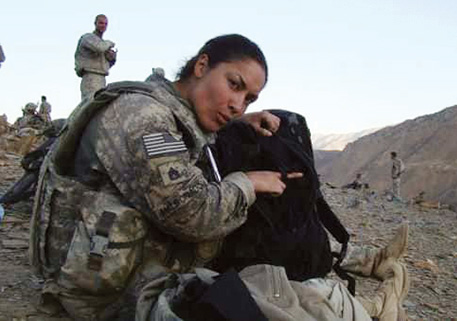VA physicians and researchers work to ensure best practices for gender-specific health issues

As the number of women veterans continues to grow, the Department of Veterans Affairs is expanding research that will better ensure this population has access to the most cutting-edge health care practices—to include minimally invasive procedures for gender-specific medical issues.
“As reproductive health researchers, we come to this work with the perspective that reproductive health care is a key part of comprehensive care for women,” said Dr. Jodie Katon, an epidemiologist and researcher at the VA Puget Sound Health System. “The VA is committed to comprehensive care for all veterans, and more women veterans are using VA services.”
Although decreasing in numbers throughout the country, hysterectomy (removal of the uterus) is the second most common surgery among American women after cesarean section.
“Surgery is a big part of gynecological care,” said Katon, who was inspired to serve the population in a system that was first designed for men. “It’s critical for women and women veterans.”
The team of researchers wanted to know if the VA followed the same trends as women nationwide in this important area.
“Over time, the practice of medicine changes and hysterectomy rates have dropped, while less invasive surgeries have increased,” explained Dr. Lisa Callegari, an OB-GYN and researcher working alongside Katon. “We were interested in looking to see if the VA is keeping up with these trends.”
Callegari said that in the past, there were only two options for hysterectomy: through a large incision on the abdomen or through the vagina. A vaginal hysterectomy is less invasive but can only be performed in certain situations. More recently, a procedure with smaller incisions—laparoscopic hysterectomy—has made less invasive hysterectomies available in more situations. Like vaginal hysterectomies, the laparoscopic hysterectomy tends to cause less pain and offers a faster recovery time.
For physicians with specialized training, along with the required equipment, laparoscopic hysterectomies can be conducted using a thin lighted viewing tube and a high-resolution camera, allowing physicians to take out the uterus through small incisions.
Callegari said that whenever possible, the least-invasive technique should be used.
“There will be exceptions, as not all women can safely have a minimally invasive hysterectomy, but we want to minimize that to the extent possible,” she stressed.
The researchers used VA medical data from across the country to examine the trends of women veterans and hysterectomies. Their comparison showed that the VA’s rates aligned with civilian women nationwide, but also showed that African-American veterans were approximately 40 percent less likely to have a minimally invasive hysterectomy compared to Caucasian veterans.
The research also showed that women of color are more likely to have large fibroids, masses on the uterus, which is a common cause of hysterectomies and may make minimally invasive surgeries more difficult.
After reviewing the findings from their initial report published last year, the research team wants to conduct a patient-centered study to learn more about the causes of the potential disparity—and how to address it.
“We are interviewing VA providers, reviewing charts to see if there’s other factors,” explained Callegari. “We need to do a better job of characterizing the problem.”
The 2014 DAV report Women Veterans: The Long Journey Home found that only one-third of VA medical centers had gynecologists on staff. Katon said the number is increasing, but when it is not feasible to provide gynecological services on site, veterans are referred to outside care.
“Whenever possible, facilities with on-site gynecology surgery should be able to offer minimally invasive procedures so all women have that opportunity,” said Katon. “We want to build up and improve gynecology services across the board.”
Both Katon and Callegari stressed that training gynecologists and providing the equipment to enable them to perform more minimally invasive procedures are necessary for addressing the disparity.
The researchers have begun presenting their findings at medical conferences. They work closely with the VA Office of Health Equity and Women’s Health Services and have shared their research throughout the rest of the VA.
“It is a huge advantage; we have people making large policy decisions working with us. We can report back recommendations, and they have the potential to implement these changes,” said Katon.
“These findings are important to DAV as we continue to work closely with the VA to ensure parity in services for all veterans regardless of gender,” said National Commander Delphine Metcalf-Foster. “It’s great to see the VA identify disparities in care and immediately work to address them, and I think this highlights the need for even more research surrounding women and minority veterans to correct such issues.”
“At the VA, we can look at this and design national interventions to reduce disparities,” said Callegari. “It’s an exciting opportunity to improve health care for women throughout the country.”






